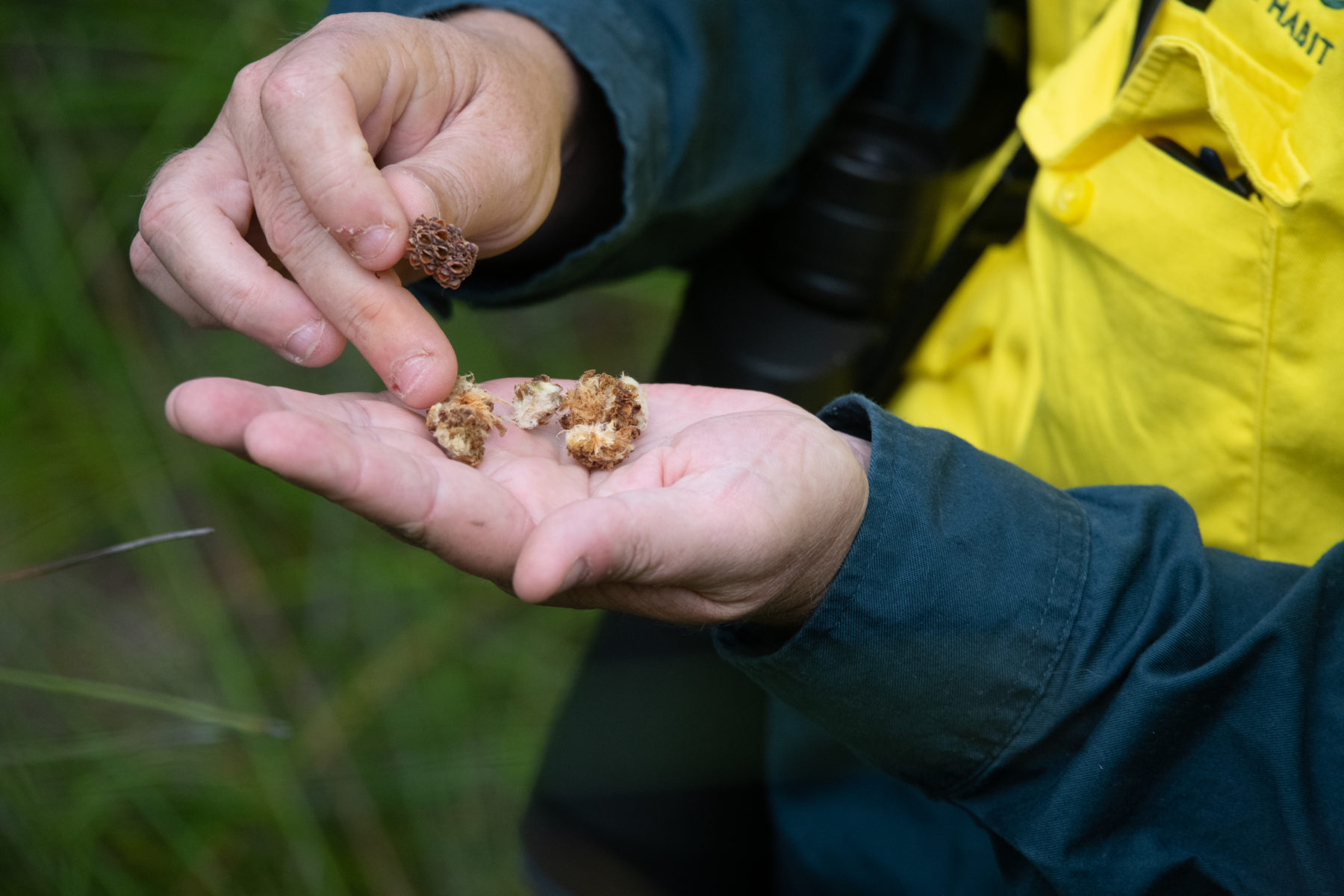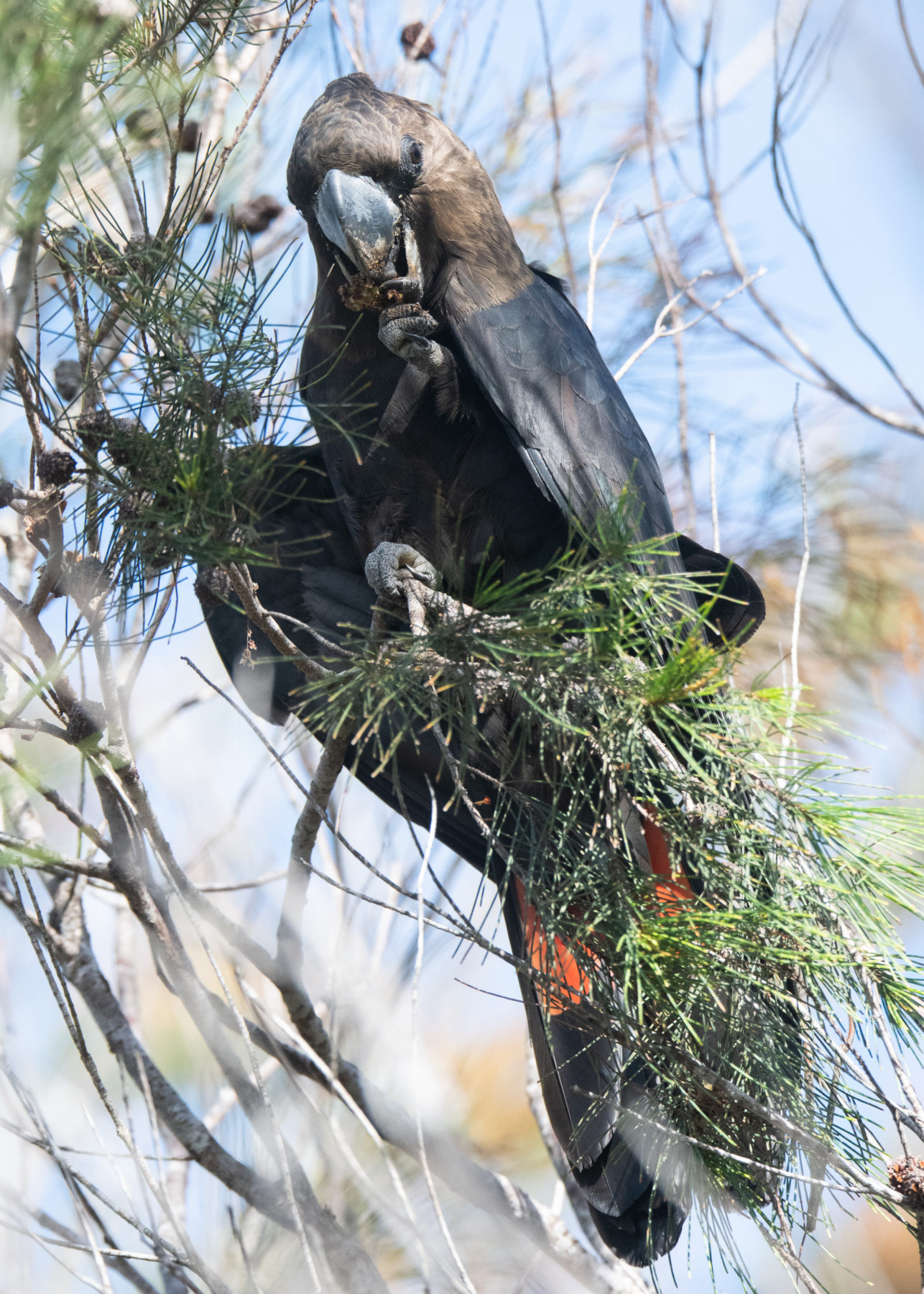Glossy black-cockatoo spotted in Northern Rivers after months of searching

The glossy black-cockatoo (Calyptorhynchus lathami) is one of Australia’s rarest cockatoo species.
Listed as Vulnerable in New South Wales, numbers in the Northern Rivers region of the state have been in decline for years due to the loss of two trees – she-oaks (which they rely on for food) and old hollow-bearing eucalypts (needed for nesting).
Then, the 2019–20 bushfires swept through the area, impacting up to 50 per cent of habitat.
“We had no idea how many glossy blacks were left,” says Harry Hackett, Glossies Northern Rivers Project manager, Wildbnb.
The Glossies Northern Rivers Project – a joint initiative between WWF-Australia, Wildbnb, and Saving our Species – was created to save the region’s population of the birds. But first, the team needed to find out how many, if any, had survived the fires.
“Surveys began in February 2022 when the team visited numerous locations of previous glossy sightings,” explains Harry.
“We identified several feed trees by the tell-tale sign of chewed she-oak cones, but the birds remained elusive.”
By late March, more chewed she-oak cones had been found, but no actual glossies.
“The team was a little concerned glossies were not turning up where we thought they might be. We reminded ourselves we were dealing with a threatened species. Loss of habitat caused by the fires would have dislocated the birds, and who knows the impacts of the catastrophic rain and flooding events across the Northern Rivers earlier this year.
“We pushed on, determined as ever to find them.”
In May, the team zeroed in on one particular location (in Bogangar in the Tweed Shire) where a small cluster of feed trees with recently-chewed cones were found.
“We returned to the same spot several days later, and there they were, a male and female pair of glossies perched in the trees above.”
It was the moment the team were starting to fear might never come.
“After searching for just shy of three months, finally success. We couldn’t wipe the smiles off our faces.”
Harry and her team dubbed the male ‘Barry’ and the female ‘The Baroness’.
“To add to the excitement, a video sent in from a citizen scientist confirmed a third bird within the same vicinity days later,” she says.









